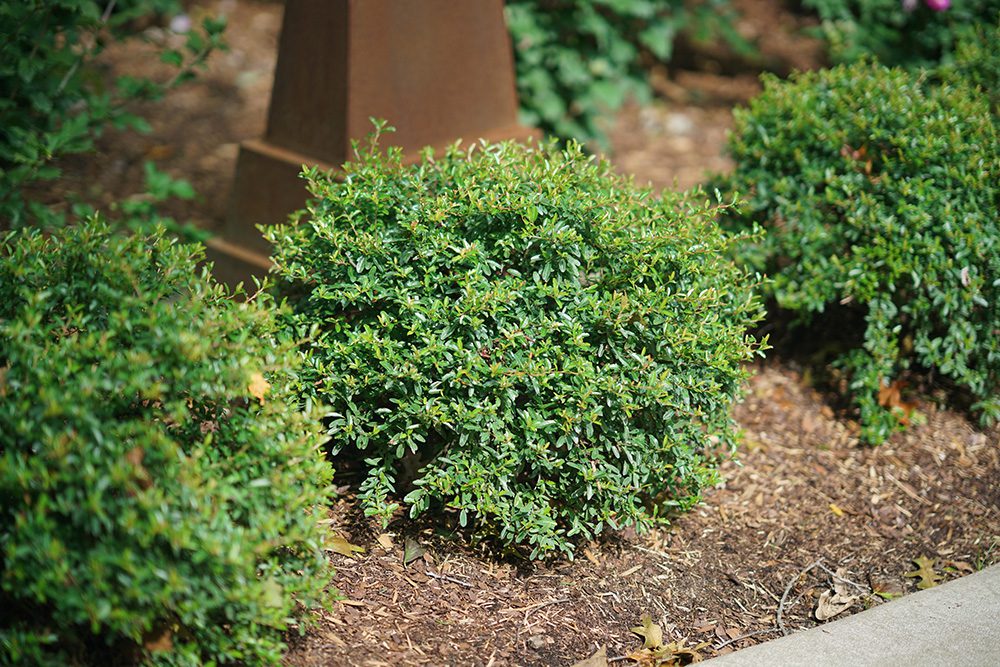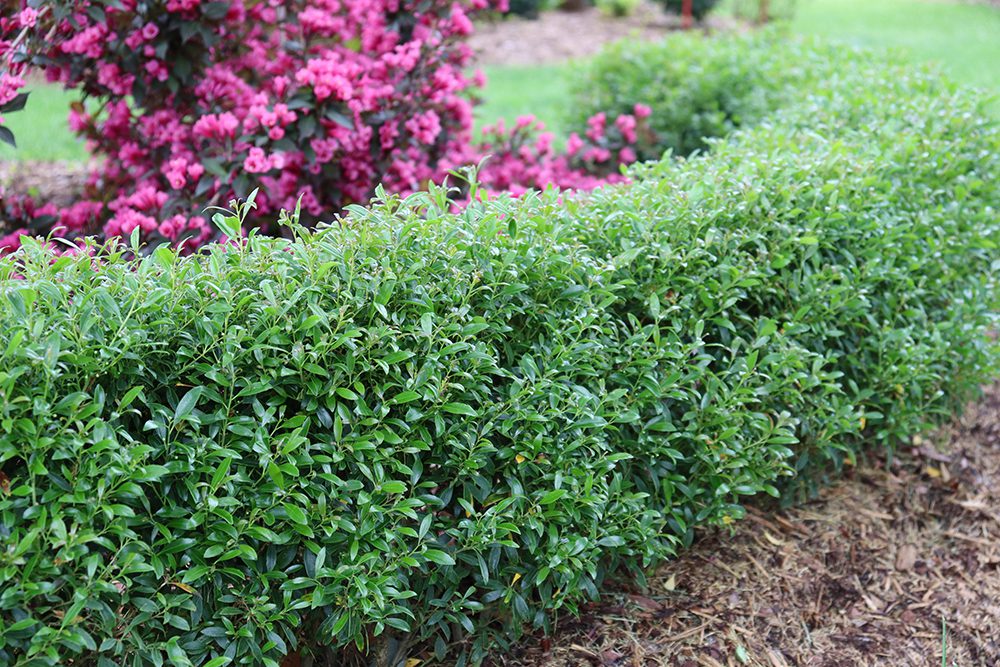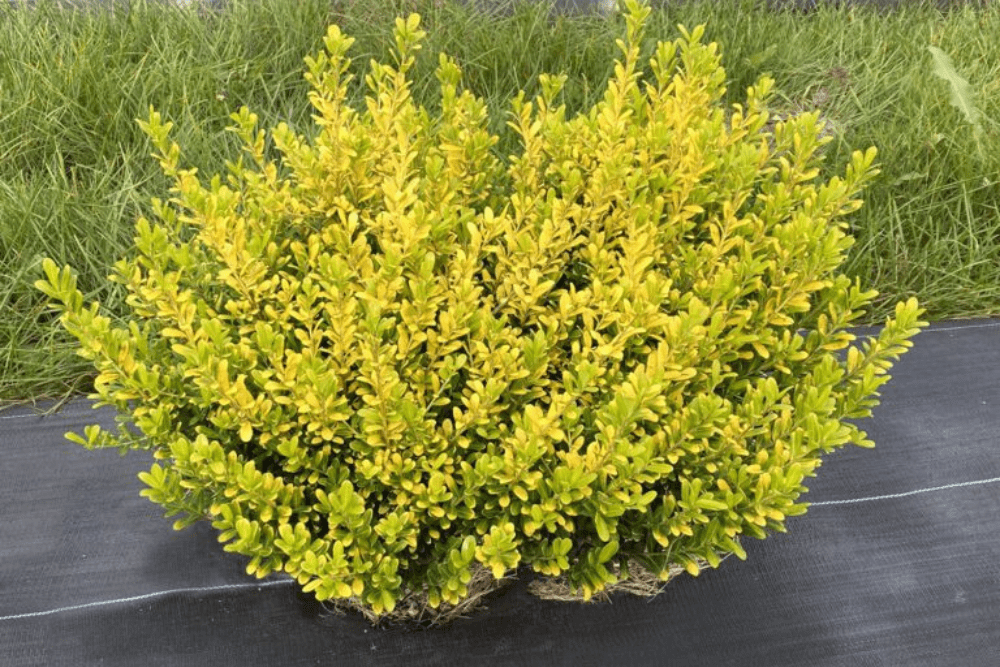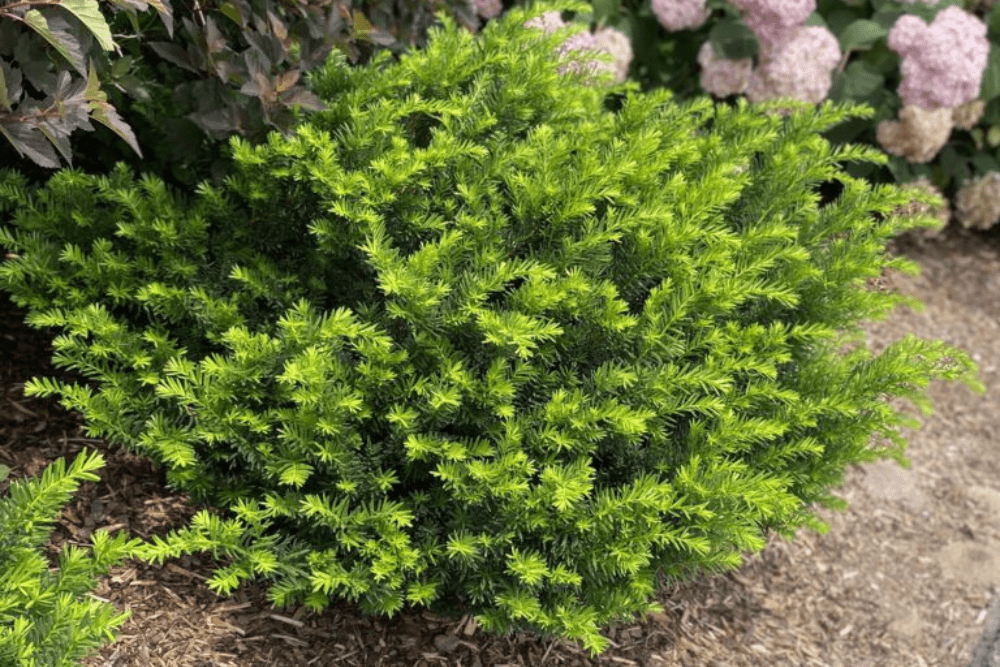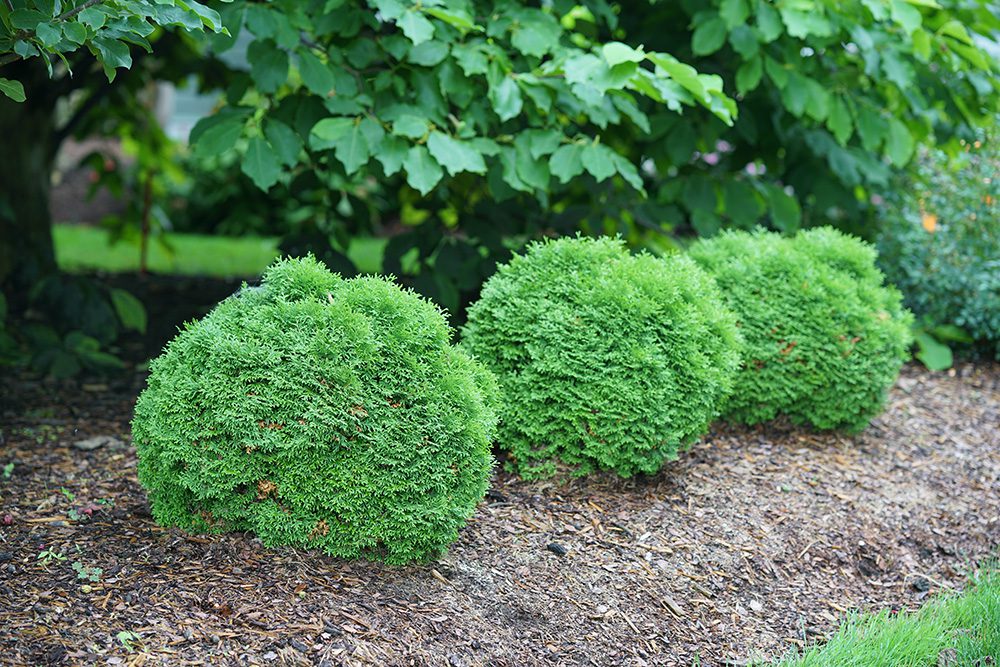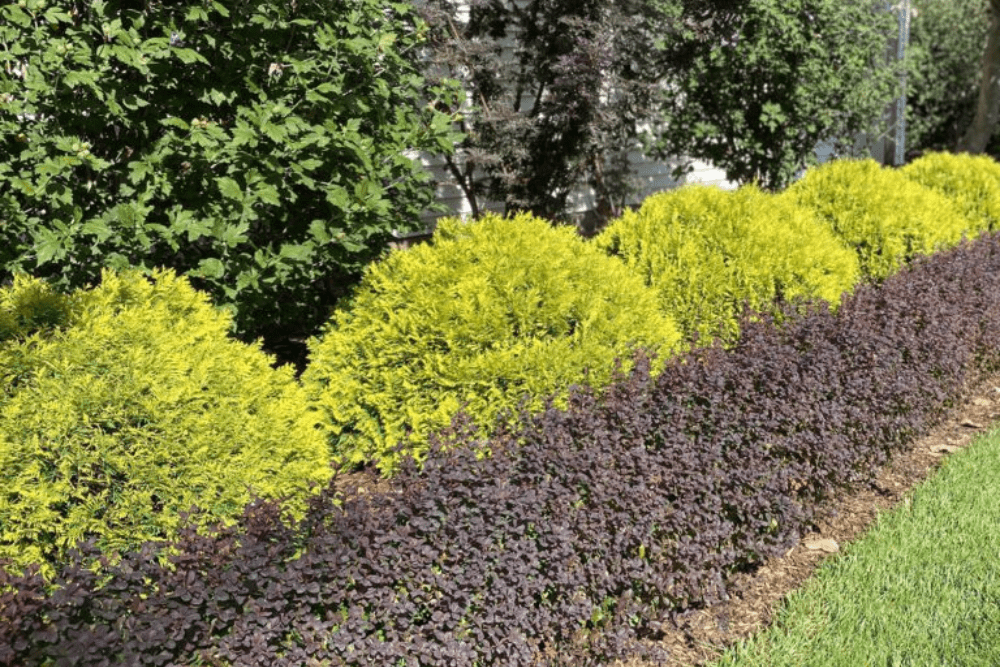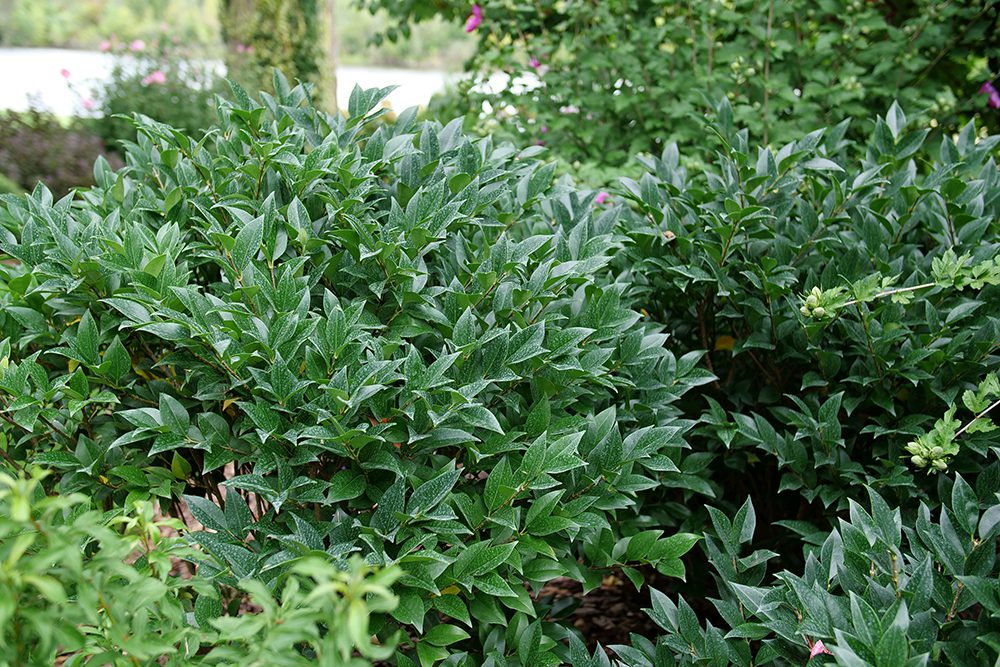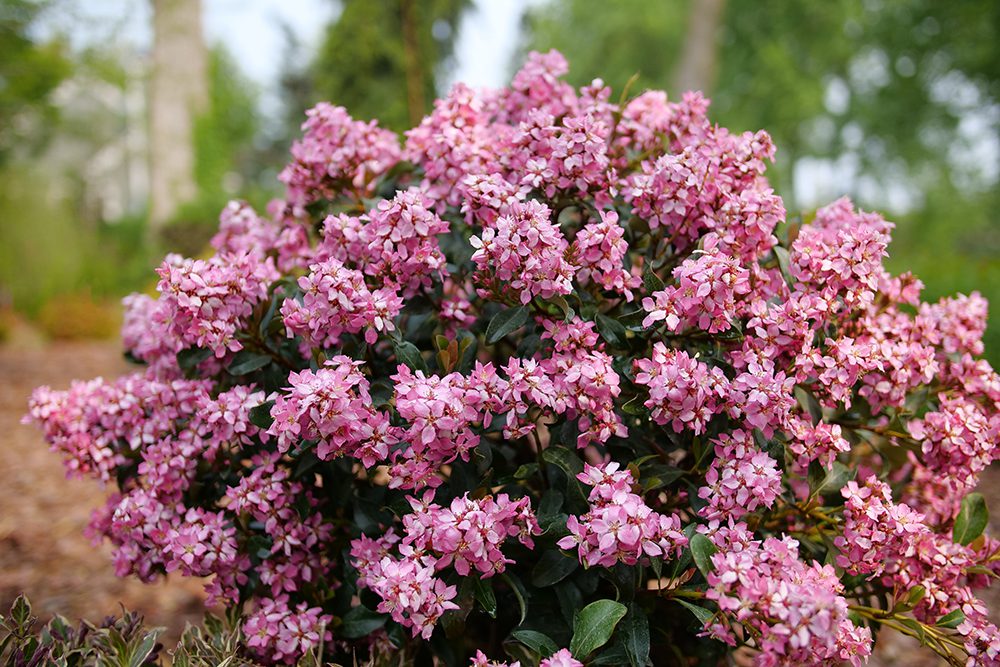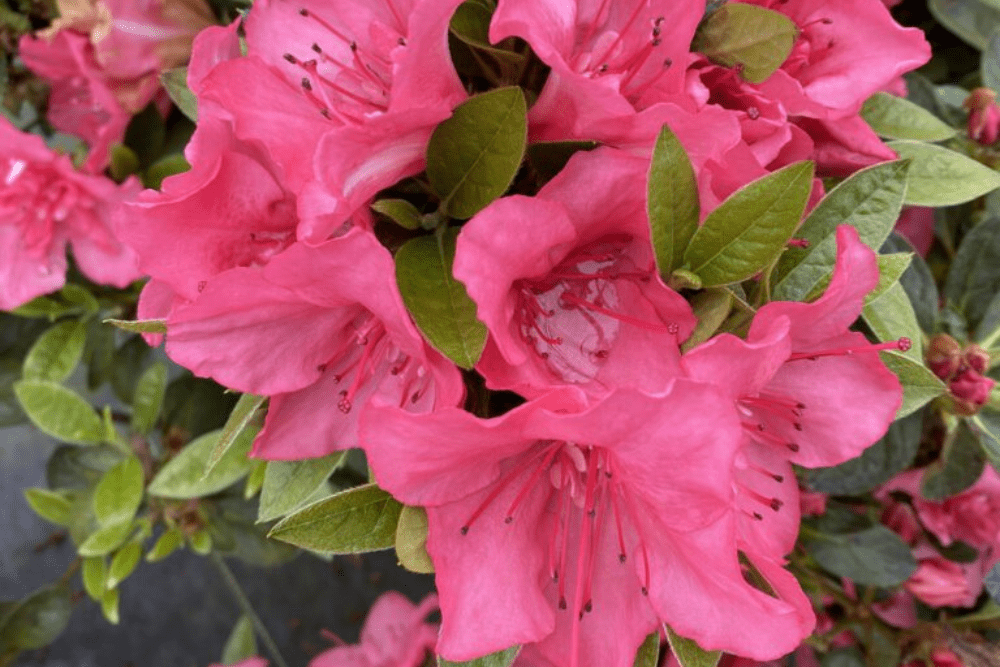Are you struggling to keep your boxwoods pest and disease-free? It might be time to consider some alternatives. Let’s look at ten evergreen shrubs you can plant instead of boxwood to form hedges, spheres, topiaries and other shapes in your landscape. Whether you live in chilly zone 4 or warm zone 9, we have ideas for you!
Elegant, evergreen boxwood shrubs have been used copiously to form hedges, spheres, topiaries and more in home gardens, commercial properties, botanical gardens and arboretums for decades. The plant’s versatility in sun and shade, suitability for shaping, deer resistance and widespread availability have contributed to its rise in popularity.
However, as has often been the case through history, the more prevalent a plant becomes, the bigger target it becomes for pests and diseases. Box tree moth, leafminers and boxwood blight have all become critical issues for boxwood (Buxus). Though breeders are making strides in developing resistant cultivars, diversifying what we plant as evergreen hedges is vitally important.
Let’s look at ten different kinds of mid-sized evergreen shrubs to consider planting instead or to replace your struggling boxwood with. All of them are evergreen; some are more amenable to tight shaping while others will give your hedge a more natural shape.
Strongbox® Inkberry Holly
If you really love the look of boxwood and are looking
for a replacement that most closely resembles it, consider Strongbox® inkberry
holly (Ilex glabra). Its dark green, rounded, glossy leaves and rounded mounded
shape are very similar to boxwood, and it can easily be shaped into tight, low
hedges and shapes. Since it grows faster to boxwood, you’ll achieve the look
you’re going for in no time, especially if sited properly. This North American
native species is naturally resistant to pests, diseases and winter burn. It’s
also moderately deer resistant.
Hardy in zones 5-9, grows in sun to part shade, best in neutral to acidic soil with average moisture, 2-3’ tall and wide, prune soft new growth in spring.
Gem Box® Inkberry Holly
For a look very similar to Strongbox®, but with a more rounded shape, try Gem Box® inkberry holly (Ilex glabra). It makes a slightly looser, but still densely branched, hedge and is perfect for carving into spheres for containers and landscape specimens. Dark red leaf tips on the new growth add to its appeal. The oval leaves are a bit longer than boxwood leaves but will give you a very similar look. Unlike many older cultivars of inkberry holly, Gem Box retains its foliage down to the ground, so you won’t see its “bare feet”. This North American native species is moderately deer resistant.
Hardy in zones 5-9, grows in sun to part shade, best in neutral to acidic soil with average moisture, 2-3’ tall and wide, prune soft new growth in spring.
Glow Pop® Japanese Holly
Here’s a shrub you will definitely spot from across the yard due to its near-fluorescent yellow, non-burning, evergreen foliage. Use it for short hedges or mixed parterres where you want to draw attention. Planting a ring of Glow Pop® Japanese holly (Ilex crenata) would look amazing around the base of a tree form panicle hydrangea. Though its shape is naturally quite tidy, it can be shaped into tighter forms.
Hardy in zones 5-9, grows in sun to part shade, best in moist, acidic soil with good drainage, 2-3’ tall and wide, prune in late winter before new growth appears.
Juke Box® Pyracomeles
Here’s a fun boxwood alternative you probably haven’t met yet. At first glance, it’s tough to tell Juke Box apart from boxwood when shaped into hedges. However, it’s a hybrid shrub made from two heat tolerant species and is rarely bothered by pests or diseases. Finely textured, glossy, bright green leaves pack this densely branched shrub that is amenable to shaping into hedges, topiaries and container specimens. For those of you in southern climates, this is the boxwood replacement for you!
Hardy in zones 7-9, grows in sun to part shade, average soil with average moisture, 1-3’ tall and wide, prune soft new growth in spring.
Stonehenge Dark Druid® Yew
In addition to boxwood, one of the most shade tolerant evergreens you’ll find for creating hedges, spheres or other shapes is a yew. We love Stonehenge Dark Druid yew (Taxus) for its deep green, needle-like foliage and soft, rounded shape. It’s easy to shape with electric hedge trimmers and keeps its good looks year-round. However, if you have issues with deer browsing your plants, this evergreen is not for you.
Hardy in zones 4-7, grows in sun and shade, amenable to most soil types and moisture levels, 3-4’ tall x 3’ wide, prune soft new growth in spring.
Tater Tot® Globe Arborvitae
If you like the look of spherical boxwood shrubs in containers but need a healthier alternative, try Tater Tot® globe arborvitae (Thuja occidentalis). Alternatively, line them up like soldiers and grow them as a short hedge. This cute, tidy evergreen shrub has a naturally rounded form and retains its emerald green color year-round. Compared to other common green globe arborvitae, its shape is tighter and more compact, so you won’t have to worry about it splitting open as it matures.
Hardy in zones 3-8, grows in sun to part shade, best in average to moist, well-drained soil, 2-3’ tall x 3-4’ wide, should not need pruning but can be shaped lightly after the new growth appears in spring.
Anna’s Magic Ball® Globe Arborvitae
Like the look of Tater Tot®? Try this bright gold version too! Both grow in a tidy, rounded sphere, though Anna’s Magic Ball® is sure to captivate your attention with its vivid coloring that really pops against a green or dark backdrop. It has good winter burn resistance and color retention in the wintertime, so you can enjoy its beautiful color every month of the year.
Hardy in zones 3-8, grows in sun to part shade, best in average to moist, well-drained soil, 2-3’ tall x 3-4’ wide, should not need pruning but can be shaped lightly after the new growth appears in spring.
Kindly® Japanese Privet
For those of you in warmer climates who are looking for alternatives to taller boxwoods for hedging, consider this newer selection of Japanese privet. It’s evergreen in the south and, since it is seedless, you won’t have to worry about it spreading around. Small, fragrant, white flowers that bees enjoy contrast well with the waxy green leaves in the springtime. Thankfully, deer tend to pass it by. Though Kindly® privet can grow up to six feet tall, it responds well to heavy pruning and shaping, if desired.
Hardy in zones 7-9, grows in sun to part shade, heat and drought tolerant, grows slowly to 4-6’ tall x 3-4’ wide, trim to shape after the new growth appears in spring.
La Vida Más® Indian Hawthorn
An ideal evergreen for low, broad hedges or as a groundcover in the South, this landscape staple is a must-have for zones 8-10. It tolerates heat, drought, salt and clay soils while retaining its clean, dark blue-green foliage year-round. In trials, this sweet pink-blooming cultivar had twice the number of flowers as typical Indian hawthorn shrubs and bloomed much longer through the spring, summer and fall. Though it can be pruned, you might prefer the natural shape of La Vida Más® as a more informal hedge. Need a taller Indian hawthorn? Try La Vida Grande® which grows 4-6’ tall and wide.
Hardy in zones 8-10, best in full sun but tolerates part shade, heat and drought tolerant, acidic, well-drained soil, grows 1-2’ tall x 3-4’ wide, prune immediately after first round of spring blooms if desired.
Perfecto Mundo® Reblooming Azaleas
For a more natural looking evergreen hedge that also provides a long season of color, try the Perfecto Mundo® series of reblooming azaleas. Better yet, create a double-layered hedge with a taller, tightly clipped row of Kindly® Japanese privet in the back. These azaleas have small, dark green leaves similar to boxwood but a more fluid shape. Vibrant flowers are produced all over the canopy twice per season in spring and from midsummer into fall. Choose from single and double-flowered cultivars, as well as more rounded or lower, wider-spreading forms in the series.
Hardy in zones 6b-9, grows in sun to part shade, best in moist, acidic soil, size varies by cultivar, prune immediately after first round of spring blooms.

